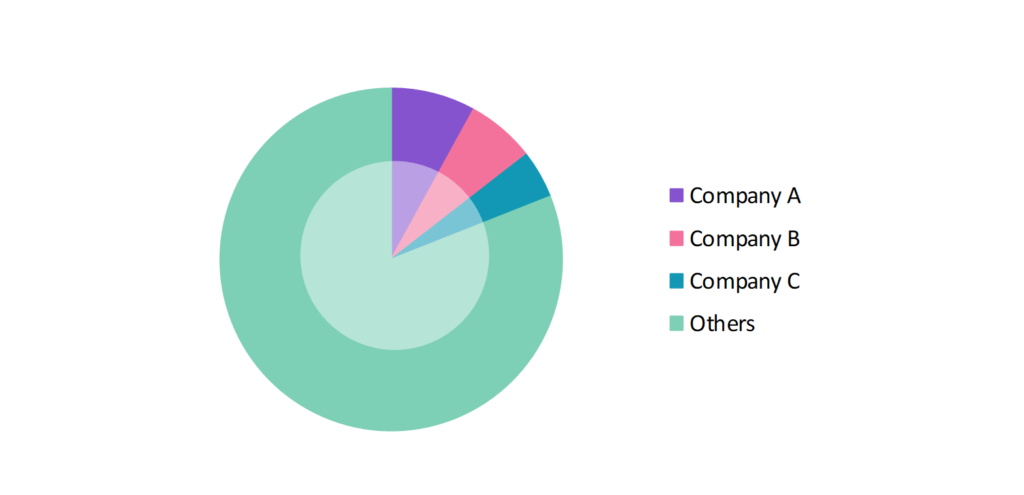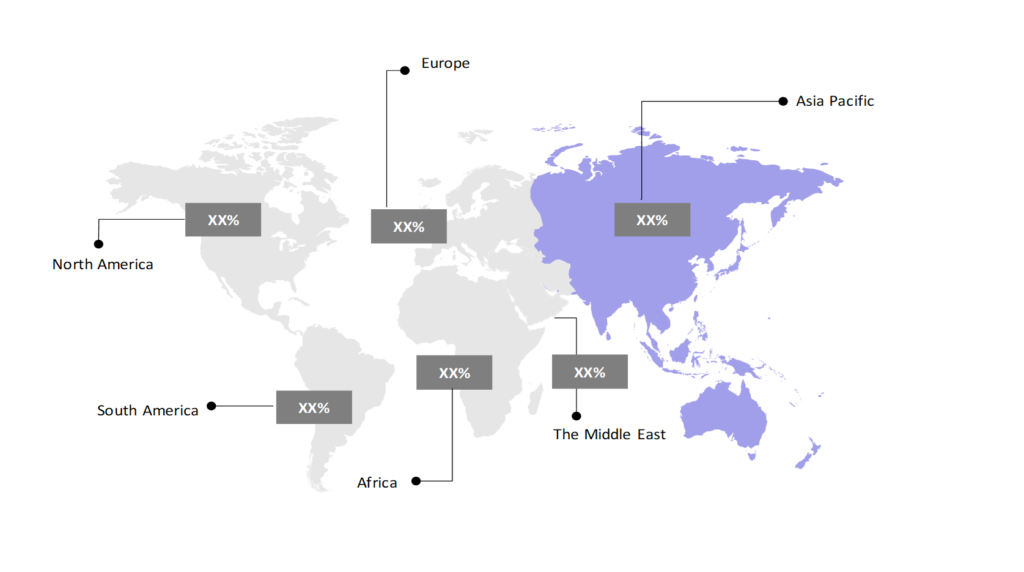Wireless Charging Market: Size, Share, Trends & Forecast (2024-2029)
The market report presents a thorough analysis segmented by Implementation (Transmitters, Receivers); by Technology (Magnetic Resonance, Inductive, Radio Frequency); by Application (Automotive, Consumer Electronics, Healthcare); by Geography (North America, South America, Asia Pacific, Europe, The Middle East, Africa).
Outlook

- The wireless charging market is estimated to be at USD 7,937.18 Mn in 2024 and is anticipated to reach USD 20,385.11 Mn in 2029.
- The wireless charging market is registering a CAGR of 20.76% during the forecast period 2024-2029.
- The global wireless charging market is experiencing significant growth, driven by the increasing demand for convenience in charging electronic devices, electric vehicles (EVs), and medical equipment. Wireless charging technology allows devices to charge without direct electrical contact, using electromagnetic fields to transfer energy.
Request a free sample.
Ecosystem

- The global wireless charging industry participants always develop strategies to preserve a competitive advantage.
- These companies focus on innovations, partnerships, and investments to develop long-range wireless charging solutions for various applications, including wearables and IoT devices, smartphones, smartwatches, and other devices.
- Several important entities in the wireless charging market include Energizer Holdings, Inc.; Samsung Electronics Co., Ltd.; Qualcomm, Inc.; Texas Instruments Inc.; WiTricity Corp.; and others.
Ask for customization.
Findings
| Attributes | Values |
|---|---|
| Historical Period | 2018-2022 |
| Base Year | 2023 |
| Forecast Period | 2024-2029 |
| Market Size (2024) | USD 7,937.18 Mn |
| Market Size (2029) | USD 20,385.11 Mn |
| Growth Rate | 20.76% CAGR from 2024 to 2029 |
| Key Segments | Implementation (Transmitters, Receivers); Technology (Magnetic Resonance, Inductive, Radio Frequency); Application (Automotive, Consumer Electronics, Healthcare); Geography (North America, South America, Asia Pacific, Europe, The Middle East, Africa) |
| Key Vendors | Energizer Holdings, Inc.; Samsung Electronics Co., Ltd.; Qualcomm, Inc.; Texas Instruments Inc.; WiTricity Corp. |
| Key Countries | The US; Canada; Mexico; Brazil; Argentina; Colombia; Chile; China; India; Japan; South Korea; The UK; Germany; Italy; France; Spain; Turkey; UAE; Saudi Arabia; Egypt; South Africa |
| Largest Market | Asia Pacific |
Get a free quote.
Trends
- Integration of Wireless Charging in Electric Vehicles (EVs): The automotive industry integrates wireless charging for electric vehicles (EVs). Wireless EV charging offers greater convenience, especially in urban environments. In 2023, Hyundai introduced its wireless charging system for its electric cars, aiming to enhance consumer convenience.
- Development of Magnetic Wireless Charging System: Wireless charging is becoming a standard feature in wearable technology, including smartwatches, fitness bands, and hearing aids. Companies are focusing on integrating smaller and more efficient wireless charging modules. In 2022, Apple introduced MagSafe, a magnetic wireless charging system for its wearable devices, including Apple Watches.
- Integration of Wireless Charging in Medical Devices: Medical device manufacturers are incorporating wireless charging in implantable and wearable devices, reducing the need for invasive surgeries or frequent battery replacements. In 2022, Medtronic released a wireless charging pacemaker system, offering patients a more efficient way to power their medical devices.
Speak to analyst.
Catalysts
- Growing Demand for Electric Vehicles (EVs): The surge in electric vehicle adoption is a significant driver for wireless charging technology. The convenience of wireless EV charging and the global shift towards green energy are accelerating demand. As of 2022, over 10 million EVs were sold worldwide, and major automotive manufacturers are investing in wireless charging infrastructure.
- Rising Smartphone and Consumer Electronics Use: The rise of smartphones, tablets, and other portable devices drives significant interest in wireless charging technology as users seek convenient solutions that eliminate the hassle of tangled cables. This demand is prompting the development of more efficient charging pads and stations and integration into furniture and public spaces, enhancing accessibility and user experience across various settings.
- Increasing Growth of Integrating Wireless Charging into Everyday Elements: The wireless charging industry is propelled by the growing emphasis on incorporating charging capabilities into everyday items like furniture, smart homes, and Internet of Things devices. This includes embedding charging pads in tables and desks for user convenience and integrating them into public spaces like coffee shops and airports for easy access.
Inquire before buying.
Restraints
- High Cost of Implementation: A significant challenge in the wireless charging market is the high infrastructure and technology implementation cost. For industries like automotive, creating wireless EV charging pads demands substantial investment in research and development and installing specialized equipment. This financial burden can deter manufacturers from adopting the technology, slowing market growth and limiting the widespread adoption of wireless charging solutions.
- Efficiency and Heat Generation Issues: Wireless charging technology, especially at high power levels, faces energy efficiency and heat generation challenges. Inductive charging, commonly used in smartphones, can lead to significant energy losses, which hinders the development of wireless chargers for high-energy devices.
- Regulatory and Standardization Challenges: The wireless charging market lacks standardization across different technologies, leading to device compatibility issues. Regulatory frameworks are also evolving to ensure safety and efficiency in wireless power transmission. In 2023, international standardization efforts, such as Qi and AirFuel Alliance, addressed these challenges, but full standardization remains a work in progress.
Personalize this research.
Hotspot

Explore purchase options.
Table of Contents
| 1. Introduction 1.1. Research Methodology 1.2. Scope of the Study 2. Market Overview / Executive Summary 2.1. Global Wireless Charging Market (2018 – 2022) 2.2. Global Wireless Charging Market (2023 – 2029) 3. Market Segmentation 3.1. Global Wireless Charging Market by Implementation 3.1.1. Transmitters 3.1.2. Receivers 3.2. Global Wireless Charging Market by Technology 3.2.1. Magnetic Resonance 3.2.2. Inductive 3.2.3. Radio Frequency 3.3. Global Wireless Charging Market by Application 3.3.1. Automotive 3.3.2. Consumer Electronics 3.3.3. Healthcare 4. Regional Segmentation 4.1. North America 4.1.1. The US 4.1.2. Canada 4.1.3. Mexico 4.2. South America 4.2.1. Brazil 4.2.2. Argentina 4.2.3. Colombia 4.2.4. Chile 4.2.5. Rest of South America 4.3. Asia Pacific 4.3.1. China 4.3.2. India 4.3.3. Japan 4.3.4. South Korea 4.3.5. Rest of Asia Pacific 4.4. Europe 4.4.1. The UK 4.4.2. Germany 4.4.3. Italy 4.4.4. France 4.4.5. Spain 4.4.6. Rest of Europe 4.5. The Middle East 4.5.1. Turkey 4.5.2. UAE 4.5.3. Saudi Arabia 4.5.4. Rest of the Middle East 4.6. Africa 4.6.1. Egypt 4.6.2. South Africa 4.6.3. Rest of Africa 5. Value Chain Analysis of the Global Wireless Charging Market 6. Porter Five Forces Analysis 6.1. Threats of New Entrants 6.2. Threats of Substitutes 6.3. Bargaining Power of Buyers 6.4. Bargaining Power of Suppliers 6.5. Competition in the Industry 7. Trends, Drivers and Challenges Analysis 7.1. Market Trends 7.1.1. Market Trend 1 7.1.2. Market Trend 2 7.1.3. Market Trend 3 7.2. Market Drivers 7.2.1. Market Driver 1 7.2.2. Market Driver 2 7.2.3. Market Driver 3 7.3. Market Challenges 7.3.1. Market Challenge 1 7.3.2. Market Challenge 2 7.3.3. Market Challenge 3 8. Opportunities Analysis 8.1. Market Opportunity 1 8.2. Market Opportunity 2 8.3. Market Opportunity 3 9. Competitive Landscape 9.1. Energizer Holdings, Inc. 9.2. Samsung Electronics Co., Ltd. 9.3. Qualcomm, Inc. 9.4. Texas Instruments Inc. 9.5. WiTricity Corp. 9.6. Company 6 9.7. Company 7 9.8. Company 8 9.9. Company 9 9.10. Company 10 |
Know the research methodology.
Wireless Charging Market – FAQs
1. What is the current size of the wireless charging market?
Ans. In 2024, the wireless charging market size is USD 7,937.18 Mn.
2. Who are the major vendors in the wireless charging market?
Ans. The major vendors in the wireless charging market are Energizer Holdings, Inc.; Samsung Electronics Co., Ltd.; Qualcomm, Inc.; Texas Instruments Inc.; WiTricity Corp.
3. Which segments are covered under the wireless charging market segments analysis?
Ans. The wireless charging market report offers in-depth insights into Implementation, Technology, Application, and Geography.
